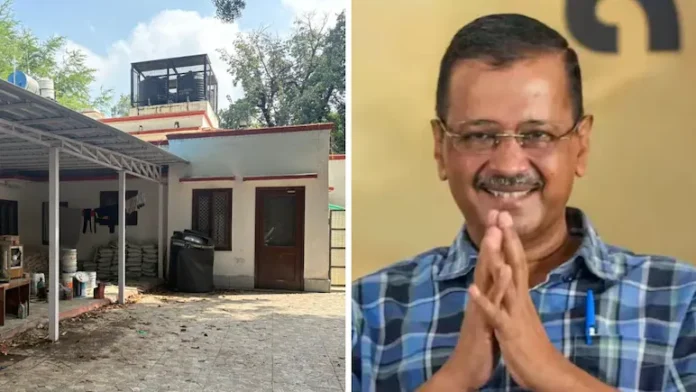Delhi Chief Minister Arvind Kejriwal has found himself in an interesting new neighbourhood. After reportedly seeking to move into the government bungalow previously allotted to Bahujan Samaj Party (BSP) chief Mayawati, Kejriwal has now been allotted a new residence near Congress leader Shashi Tharoor’s official bungalow. The move has sparked political chatter in the national capital, not just for the high-profile locality but also for the symbolic significance of the neighbours involved.
According to government officials, Kejriwal’s new residence is located in the heart of Lutyens’ Delhi — an area that houses some of the most prominent political figures in the country. The Chief Minister’s relocation follows routine reallocation of government accommodations based on seniority, security category, and official designation. However, it has gained attention due to the earlier reports suggesting Kejriwal’s interest in occupying the sprawling residence once used by Mayawati during her tenure as Uttar Pradesh Chief Minister.
The shift places Kejriwal next to Shashi Tharoor, a Congress Member of Parliament known for his eloquence and liberal political outlook. While both leaders have often represented contrasting political ideologies, they share a reputation for intellect-driven politics and articulate public communication. Their proximity in one of Delhi’s most prestigious addresses is being viewed with curiosity among political observers, given the dynamics of opposition unity and cross-party engagements in national politics.
Officials said that the Delhi Chief Minister’s move was part of a planned transition following routine maintenance and reallocation procedures for senior government functionaries. The new residence meets the Chief Minister’s security and space requirements, aligning with the official norms of accommodation for state leaders posted in Delhi.
Interestingly, the episode has also reignited conversations about the political symbolism attached to official residences in the capital. Mayawati’s former bungalow, for instance, has been considered one of the grandest among the ministerial quarters — and her long occupancy there had given it a distinct identity associated with Dalit politics and BSP’s leadership. Kejriwal’s earlier request for that residence was interpreted by some as a sign of political assertion, while others saw it as an administrative preference.
Now, with Kejriwal and Tharoor sharing the same neighbourhood, political circles are abuzz with speculation about occasional encounters between the two leaders who have, on several occasions, shared similar stands on governance reforms, freedom of expression, and federal cooperation.
While the development is largely administrative in nature, it has lent itself to symbolic interpretations — one that blends Delhi’s deep-rooted political traditions with the evolving narratives of India’s contemporary leadership.



